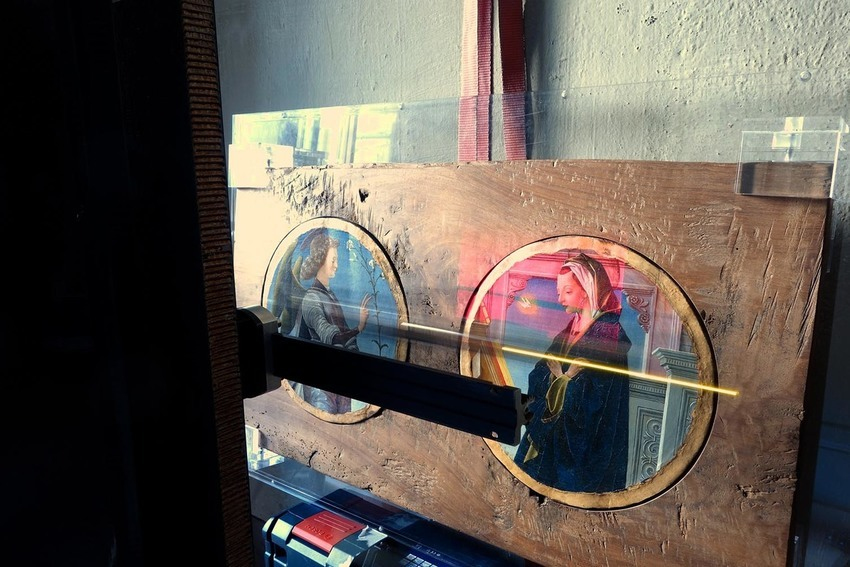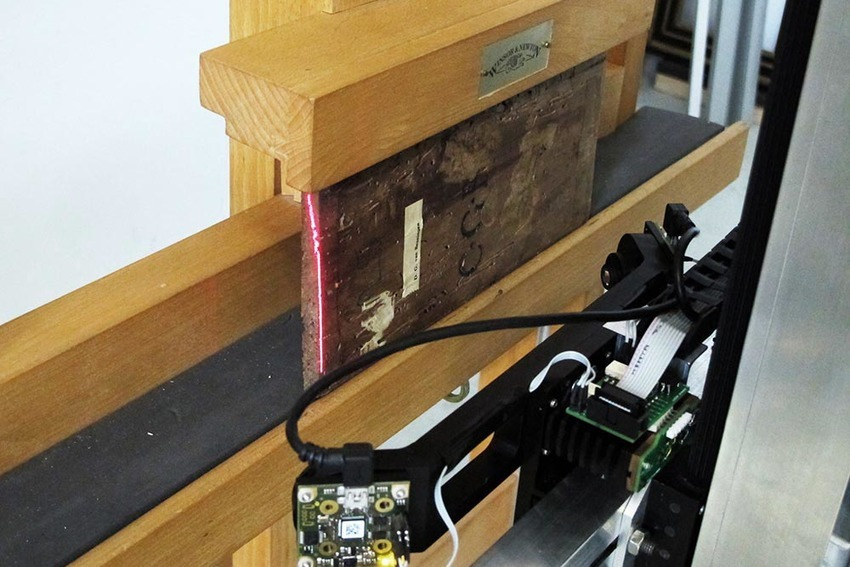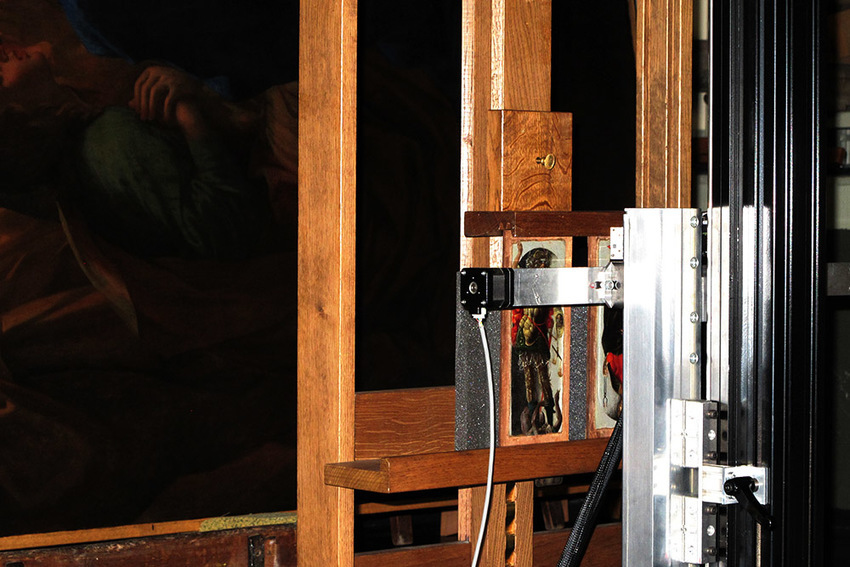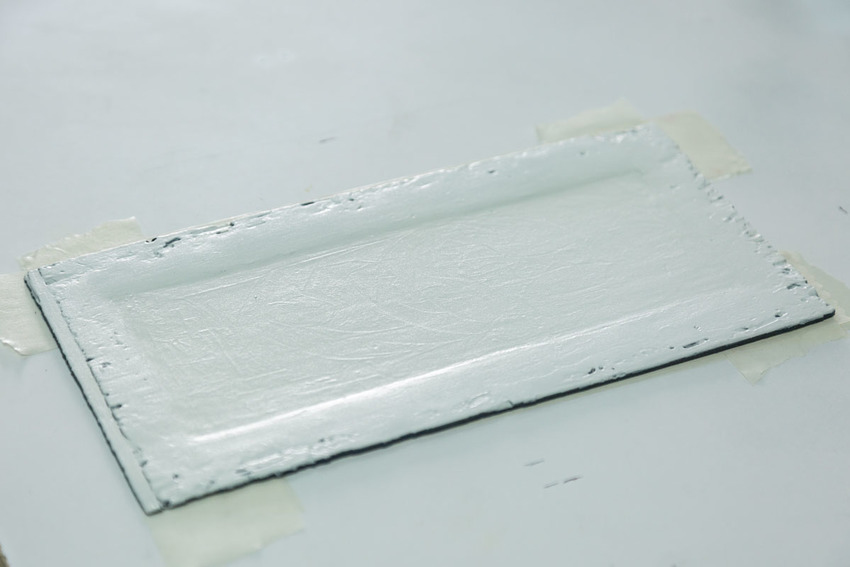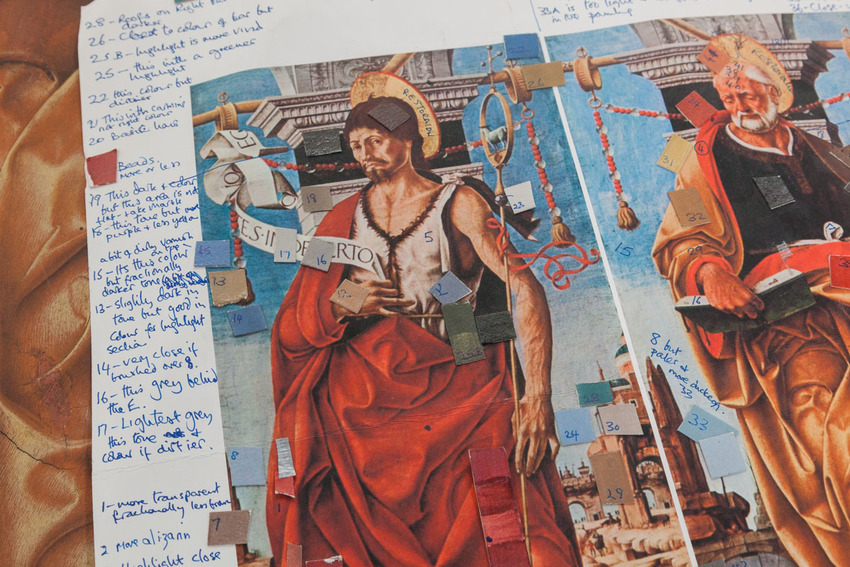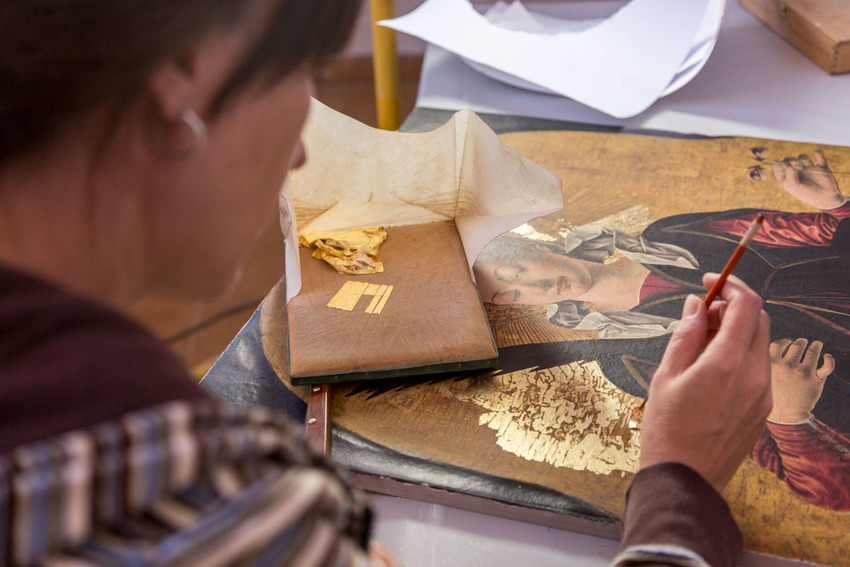
One of the suggested reconstructions of the Griffoni Polyptych indicating the relative position of the different panels.
Today, sixteen parts of the altarpiece are scattered between the National Gallery in London, the National Gallery of Art in Washington, the Musei Vaticani, the Brera in Milan, Museo di Villa Cagnola in Gazzada, Museum Boijmans van Beuningen in Rotterdam, the Musée du Louvre in Paris, Collezione Vittorio Cini in Venice and the Pinacoteca Nazionale, Ferrara. The frame was destroyed and some panels are still missing.
The high-resolution recording of the panels began in June 2012 following a conversation between Roberto Terra, Francesco Ceccarelli, Nadja Aksamija and Adam Lowe while Factum was recording the main doors on the unfinished façade of San Petronio.
The work to record and replicate all 16 panels of the great Bolognese altarpiece, the Polittico Griffoni, painted in 1471–72 by Francesco del Cossa and Ercole
de’ Roberti, lasted for several years between 2012 and 2018. It was not commissioned by any organisation – it simply started and gained momentum. It is a demonstration of how digital technology can create new ways of studying, displaying, sharing and experiencing a work of art.
– Adam Lowe, ‘Recording and Re-uniting the Polittico Griffoni’
in ‘The Aura in the Age of Digital Materiality’, SilvanaEditoriale, 2020
![[L] Hypothesis of a possible layout of the original Griffono Polyptych © Cecilia Cavalca, 2013 - [R] Hand drawing by Stefano Orlandi, made in 1725 before the dismantling of the polyptych, that guided the initial research on the Griffoni Polyptych from Bologna University © State Archive of Bologna](https://www.factum-arte.com/resources/images/ff/projects/montaje_hyp_drawing.jpg)
[Left] Hypothesis of a possible layout of the original Griffono Polyptych © Cecilia Cavalca, 2013 – [Right] Hand drawing by Stefano Orlandi, made in 1725 before the dismantling of the polyptych, that guided the initial research on the Griffoni Polyptych from Bologna University © State Archive of Bologna
Recording the panels
Between 2012 and 2015, all the surviving paintings were recorded using the Lucida 3D Scanner designed by Manuel Franquelo and developed by Factum Arte to record the surface of paintings. They were also recorded using composite photography to ensure high-resolution accurate colour data. In every case the recording was carried out on the understanding that each museum or collection would receive the files for the complete altarpiece.
Collezione Cini, Venice
St George, St Catherine, St Jerome
June 2012

Top: Ercole de’Roberti, Saint George, c. 1472, 26.3 x 9.3 cm, Fondazione Giorgio Cini, Venice, front and back; Bottom: 3D renders generated by Lucida, front and back © Factum Foundation
Museo di Villa Cagnola, Gazzada
Annunciation
September 2012
National Gallery of Art, London
Saint Vincent Ferrer
August 2013

Panoramic photography system recording the Polittico Griffoni’s main panel © Factum Foundation
Vatican Museums, Rome
The Miracles of Saint Vincent Ferrer (Predella)
October 2013

Ercole de’Roberti, Stories of Saint Vincent Ferrer, c. 1473 © Factum Foundation

3D render of the panel generated by Lucida © Factum Foundation

3D render of the panel’s back. The modulation corresponds to the pattern of horizontal cracks visible in the front side © Factum Foundation
Pinacoteca Nazionale, Ferrara
St Petronius
October 2013

[Left ]Colour data of Ercole de’Roberti’s Saint Petronius, c. 1472, 26.3 x 9.3 cm, Pinacoteca Nazionale, Ferrara. [Right] 3D render of Saint Petronius © Factum Foundation © Factum Foundation
Pinacoteca di Brera, Milan
St Peter, St John the Baptist
November 2014
Museum Boijmans van Beuningen, Rotterdam
St Anthony the Abbot
April 2015
National Gallery of Art, Washington
St Florian, St Lucy, Crucifixion
September 2015
Musée du Louvre, Paris
St Apollonia, St Michael Archangel
October 2015
Concurrently to the scanning and production of the facsimiles, Factum Foundation developed a digital viewer enabling the visualisation of the scanned relief and colour data of the panels at an extremely high resolution, allowing the inspection of every single detail of the paintings. The data was given to each institution for study and conservation purposes. The viewer, in Factum’s standard format, includes colour and 3D information and a layer containing transparent colour superimposed over the 3D scan. The data can be viewed in layers or in a side by side synchronised format.
Re-materialisation
The first facsimiles were produced while the recording was still underway. They were initially CNC-milled into polyurethane, but as the technology developed, a second edition of the facsimiles was created using a mix of elevated printing by Canon Production Printing and CNC milling. The relief prints were moulded and then cast in traditional animal-glue gesso, over which the colour was added by printing in multiple layers on Factum’s custom flatbed printer. Varnishes and waxes are used to produce a character similar to each original panel. The gilding presented specific challenges and was done by hand with painstaking attention to surface detail by Eva Segovia and later Silvia Álvarez.
A special structure to hang the panels was also built in 2017 and later, for the exhibition display at ‘Il Polittico Griffoni rinasce a Bologna’ (Palazzo Fava, 18 May 2020 – 15 February 2021), the facsimile was displayed without the gold frame but in the spatial relationship proposed by Cecilia Cavalca in 2013.
When looking at the facsimile of the Polittico Griffoni, we can grasp the physical and emotional impact in ways that cannot be achieved in a normal ‘reproduction’. The panels are indistinguishable from the originals in scale, colour and surface to the naked eye under museum conditions. It is an objective replication generating forensic evidence that encourages a profound reflection on the dynamic process of originality.
– Adam Lowe, ‘Recording and Re-uniting the Polittico Griffoni’
in ‘The Aura in the Age of Digital Materiality’, SilvanaEditoriale, 2020
In October 2017, facsimiles of the 16 panels were given to the Basilica of San Petronio by Factum Foundation and were installed in the Chapel of St Vincent Ferrer on temporary display.
This triggered the idea of an exhibition at Palazzo Fava, which saw its fulfillment in 2020: a collaboration with Genus Bononiae and its president Fabio Roversi Monaco resulted in loan agreements with all the museums and collections involved. The exhibition ‘La Riscoperta di un Capolavoro’ at Palazzo Fava saw all the existing panels brought together in the same space for the first time since 1725, together with a second edition of the facsimiles.
In May 2021, after the closing of the exhibition, the facsimile was installed on permanent display in Palazzo Pepoli, within the Museum of the History of Bologna (for which Factum Arte produced the facsimile of the map of the city from the Sala Bologna).

The facsimile created by Factum Foundation on display at Palazzo Fava © Paolo Righi for Genus Bononiae

The original panels reunited © Paolo Righi for Genus Bononiae
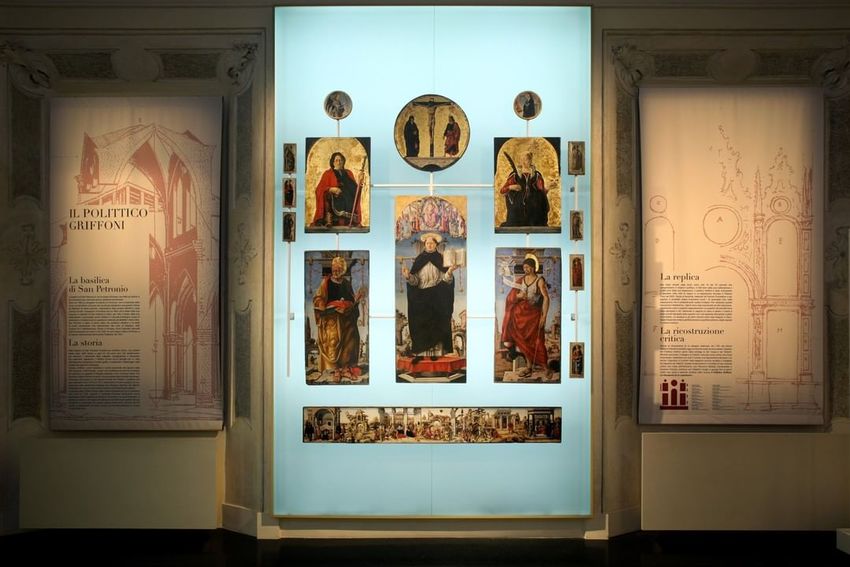
The facsimile installed at Palazzo Pepoli © Genus Bononiae

